Exposed? Maybe. Maybe Not.
On June 19, 1936, the number one ranked heavyweight contender, Joe Louis, stepped into the ring at Yankee Stadium in New York City. In the opposite corner stood Max Schmeling, the third former champion Louis had faced in his young career. Louis boasted a record of 24-0; Schemling was 48-7-4, nine years older, and a ten-to-one underdog.
In the early rounds, Schmeling boxed and moved, while Louis patiently stalked his assumed prey. But then, in round four, as Louis let his left hand drop after throwing a jab, Max struck with a perfectly timed right hand counter. Joe staggered, and Schmeling moved in, scoring with several big shots until Louis went down. He jumped back up quickly, but from that point on, the German picked him apart, landing right hand counters again and again, eventually putting Joe down for the count in round twelve.

Before the fight, Schmeling famously commented that he “saw something,” some flaw in the young contender’s technique that he could exploit, and he demonstrated Joe was vulnerable to sharp counters over his low left hand. Was Joe Louis “exposed”?
On July 22, 1963, Floyd Patterson (38-3) was knocked out in round one by the fearsome Sonny Liston (34-1). This was the second time in ten months that Liston took Patterson out in just over two minutes. After the first humiliating defeat, Floyd famously donned a disguise so he could sneak out of the arena unseen. In the rematch, Patterson went down three times and was finally counted out with nearly a minute remaining in the round. But Floyd was already known for possessing a somewhat fragile jaw, not to mention an even more fragile self-regard. There was also the fact that Liston was 21 pounds heavier. Was Floyd Patterson “exposed”?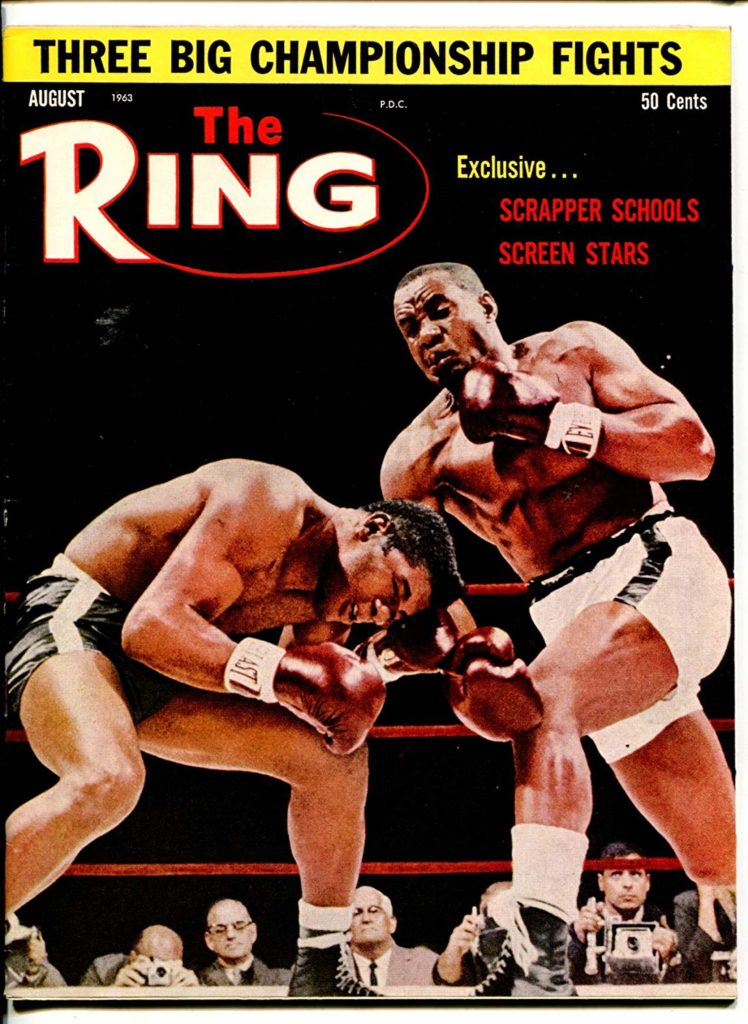 On September 24, 1994, Lennox Lewis held the WBC world title, was undefeated and a five-to-one favorite over fringe contender Oliver McCall (28-5). In the first round, the taller, quicker Brit outboxed his American foe, landing jabs and successfully evading McCall’s lunging attacks. But early in the second round McCall threw a perfectly timed overhand right that landed on the chin, and down went Lewis. Staggering to his feet, Lennox claimed to be ready to continue, but referee Jose Garcia didn’t like how he looked and stopped the fight. The young Lewis complained bitterly about the stoppage, but many now just saw him as chinny. Was Lennox Lewis “exposed?”
On September 24, 1994, Lennox Lewis held the WBC world title, was undefeated and a five-to-one favorite over fringe contender Oliver McCall (28-5). In the first round, the taller, quicker Brit outboxed his American foe, landing jabs and successfully evading McCall’s lunging attacks. But early in the second round McCall threw a perfectly timed overhand right that landed on the chin, and down went Lewis. Staggering to his feet, Lennox claimed to be ready to continue, but referee Jose Garcia didn’t like how he looked and stopped the fight. The young Lewis complained bitterly about the stoppage, but many now just saw him as chinny. Was Lennox Lewis “exposed?”
In 2003, Wladimir Klitschko (40-1) was the number one contender in the heavyweight division, considered by many to be the heir apparent to Lennox Lewis. Klitschko was waiting patiently for his shot at the man who most recently had defeated Mike Tyson in a dramatic, yet one-sided event the previous summer as Lewis was then scheduled to face Kirk Johnson (a fight which never came to pass). In the meantime, Klitschko took on South African contender Corrie Sanders (38-2). Having competed just twice since his exciting loss to Hasim Rahman nearly three years before, Sanders was considered to be in a state of semi-retirement and of little threat to “Dr. Steelhammer.” In fact, Sanders was better known for his skills at golf than for his exploits in the fight game. Few observers expected much.
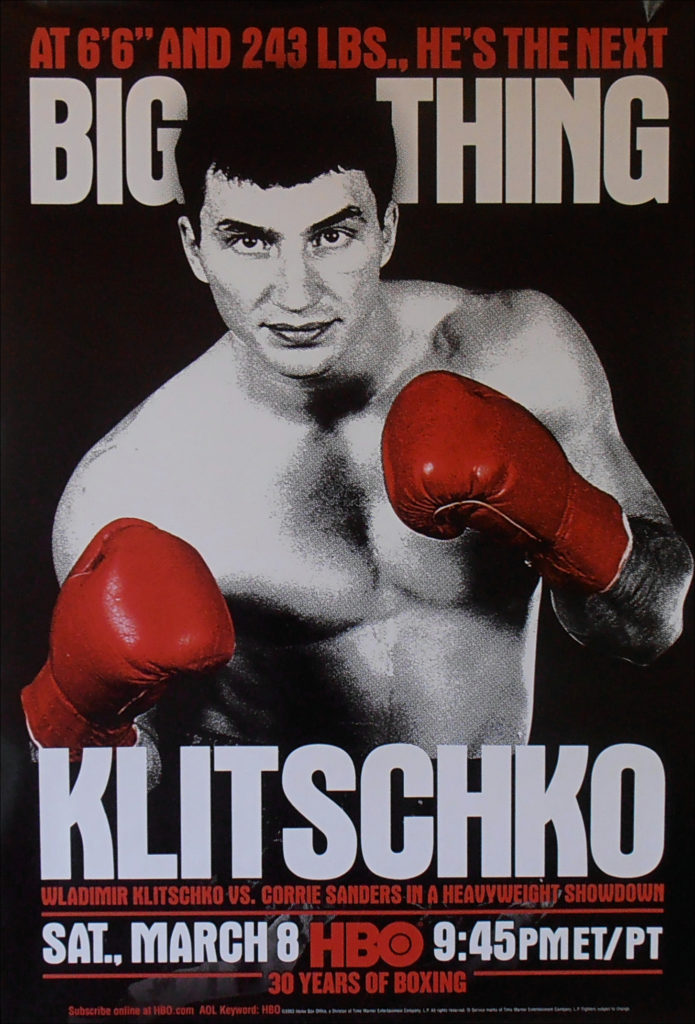
On March 8, 2003, Klitschko and Sanders met at the Preussag Arena in Hannover, Germany. The first two minutes of round one were a sedate feeling-out process, with the taller Klitschko holding a clear advantage over the 6’4” South African. But then Sanders pressed forward and with thirty seconds remaining in the round, landed a left cross and the big Ukranian went down. Klitschko didn’t look good as he rose, and another barrage by “The Sniper” put Wlad down again. Klitschko survived to hear the bell but in round two Sanders put him down twice more and the referee waved it off.
After this brutal defeat Klitschko was seen by many as damaged goods. His reputation continued to decline after a stoppage loss to Lamon Brewster a year later. Many boxing experts viewed him as having no chin, no stamina, and no heart. He was seen as a classic front runner, a man who folded if he couldn’t overwhelm his opponent early in the fight. Was Wladimir Klitschko “exposed”?
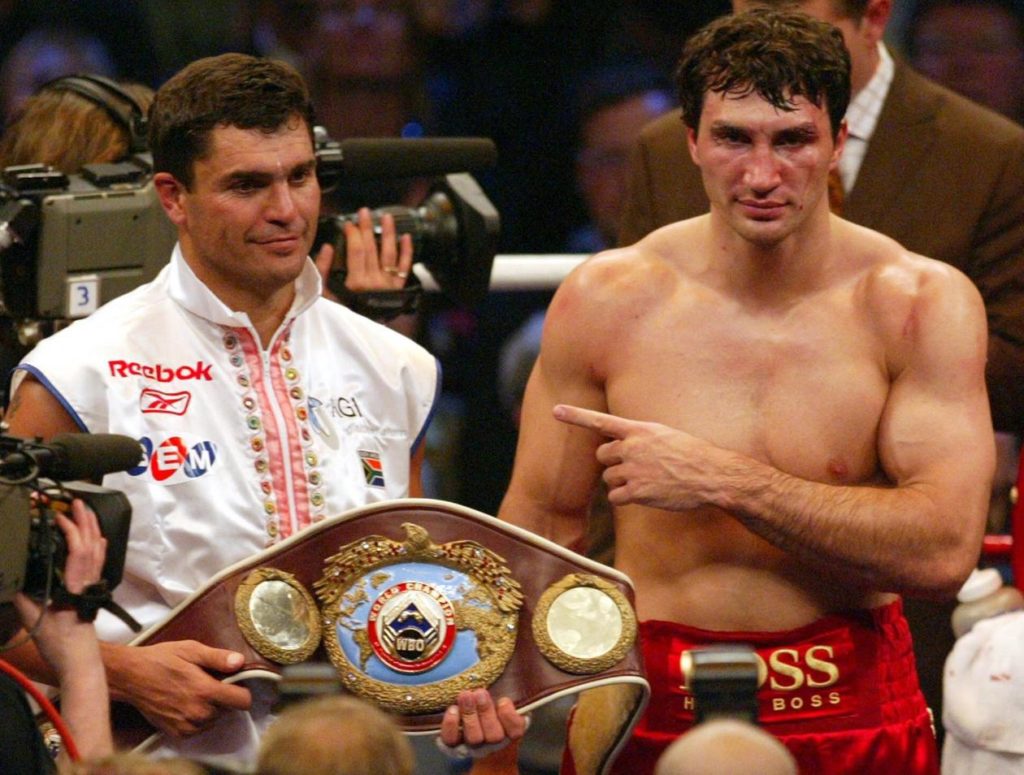
On June 1, 2019, number one rated heavyweight Anthony Joshua (22-0) faced Andy Ruiz (32-1). Largely unknown outside of hardcore boxing fans, Ruiz was viewed by those who did know as talented, but with serious conditioning issues and unimpressive punching power. Additionally, he was a late replacement for Jarrell Miller, who had tested positive for just about every performance-enhancing drug that exists. Looking at Andy’s physique, few thought he would ever be caught abusing PEDs. Not many more thought he represented a dangerous threat to Joshua’s undefeated streak as the Briton looked ahead to huge money showdowns with Tyson Fury and Deontay Wilder.

The bout was uneventful through the first two rounds, but then came round three. Joshua opened up early, landing a sharp uppercut-hook combination that put Ruiz on his back. The challenger made it to his feet, but it appeared the end was near as Joshua, clearly gunning for the knockout, landed his big right hand. But Ruiz kept his feet and landed a vicious counter left hook that staggered Joshua before the challenger’s follow-up barrage put the champion down.
Joshau looked unsteady after beating the count, but Ruiz seemed wary of eating a counter and didn’t push for the knockout. The action slowed for a minute. Then with just ten seconds left, Ruiz opened up again, staggering Joshua, and eventually driving him to the canvas for a second time. Although the big Brit made it to his feet at the count of eight, he looked done. But the round ended before action could resume, and Joshua had a reprieve.
The contest slowed considerably after that as neither man wanted to risk walking into a big shot. Rounds four through six were close, but momentum was on the side of the challenger as Joshua appeared to never fully recover from the punishment he took in round three.
Early in the seventh, Ruiz landed a solid left hook. It didn’t visibly shake Joshua, but after a brief pause, Ruiz pounced again, winging big shots and putting the titlist down for the third time. Joshua was up quickly and even fought back briefly once the action resumed, landing a hard jab that got Ruiz’s attention. But the rally was short-lived, and Ruiz wasted little time mauling his wounded prey, scoring a fourth knockdown. Joshua was up before the count of ten but didn’t show much enthusiasm for continuing and referee Michael Griffin finally waved the fight off.
Afterwards, the new legion of Joshua critics became quite vocal about his questionable chin, lack of stamina, and his lack of ability. His prior wins were swept aside and the whispers turned into shouts: “Exposed!” But what does the term “exposed” really mean anyway? Maybe a lot. But to find out we need to head back to 1936.
Joe Louis’s loss to Max Schmeling certainly exposed a weakness. The defeat was a huge setback to be sure, but it was also an opportunity for Louis to learn and grow. Back in the ring just two months later, Louis blew out yet another former champion, Jack Sharkey. Over the next year, he reeled off seven straight wins over a wide range of opponents before taking the world title from Jim Braddock. Louis wouldn’t relinquish that belt for more than a decade, in the process besting virtually every good and great contender of his time. Even now, more than eighty years after he won the heavyweight championship, Joe Louis is regarded by most as the second greatest heavyweight in history. Some say he’s number one.
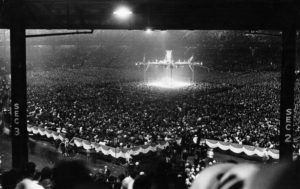
Jump forward from Louis vs Schmeling to the “exposed” Floyd Patterson, reeling from his second straight loss to Sonny Liston. Viewed as both physically and psychologically fragile, few boxing experts predicted much from the former champion. And yet he found the strength to continue, fighting in a new era where most of the top heavyweights were significantly bigger and heavier than this former middleweight. The quick-handed Patterson defeated the likes of Eddie Machen and George Chuvalo, which gave him a shot at the new champion, Muhammad Ali.
Although the larger, faster Ali outclassed him, Patterson remained in contention with a knockout over perennial contender Henry Cooper. He would suffer a draw and a loss to Jerry Quarry, then another loss to Jimmy Ellis, but all three times he had a strong case for deserving the nod against two of the best heavyweights in the world. At age 37, Patterson would claim another top ten scalp, beating the younger and stronger Oscar Bonavena, before losing once more to Ali. While Patterson never regained the heavyweight title, he put together a hell of a run after losing to Liston, remaining a viable contender for nearly a decade and owning eleven total wins over top-rated contenders.
Lennox Lewis took some time off after his shock loss to Oliver McCall and when he returned to rebuild his career, he scored victories over top contenders like Tommy Morrison, Ray Mercer, Henry Akinwande, and Andrew Golota. He then seized the lineal title from Shannon Briggs, unified belts against Evander Holyfield, and beat dangerous young talents Michael Grant and David Tua. True, Lewis lost in another upset to Hasim Rahman, but he then destroyed Rahman in a return bout. And after ending Mike Tyson’s run as a viable contender, Lewis thrillingly concluded his career against the incredibly tough and determined Vitali Klitschko. Lewis is now a Hall-of-Fame inductee and arguably one of the top ten greatest heavyweights of all time.

Eight-and-a-half years after Lewis vs McCall I, Wladimir Klitschko was trying to pick up the pieces after his defeat to Corrie Sanders. But a loss to Lamon Brewster and a shaky win against DaVarryl Williamson didn’t earn him any new fans. Many assumed Klitschko was one knockout away from retirement. But he kept at it. He hired Emanuel Steward the legendary trainer’s influence led to Klitschko fighting with greater confidence. He won an exciting battle against up-and-coming bruiser Samuel Peter and dispatched the defacto number one heavyweight Chris Byrd with clinical ease. From there on out, he utterly dominated the division, beating pretty much every worthy contender. Now retired, he’s a lock for Canastota.
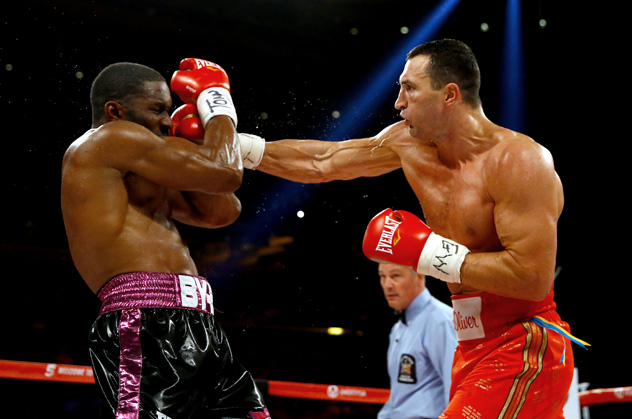
So with all this in mind, let’s revisit Joshua vs Ruiz. Anthony Joshua is 29 years old. He’s been a professional fighter for less than six years but he beat a future Hall-of-Famer in Wladimir Klitschko and owns victories over more top contenders than anyone currently active. Yes, he showed some serious flaws against Ruiz. He left himself open during attacks and failed to tie Ruiz up when “The Destroyer” got into an offensive groove. However, he also knocked Ruiz down and was just a punch away from a third-round knockout. He demonstrated serious heart in getting up four times, especially considering he never really recovered from the first knockdown. His size and power were enough to deter Ruiz for much of the fight. No one should assume that AJ can’t make the necessary adjustments to win the contracted rematch.
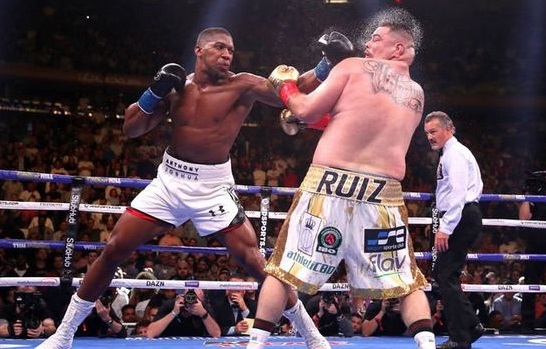
Joe Louis, Floyd Patterson, Lennox Lewis, and Wladimir Klitschko all improved after their big losses, and all went on to Hall-of-Fame careers. In every single case, many so-called experts argued their careers were effectively over after losing to huge underdogs. But sometimes a defeat provides a valuable learning opportunity and the spur to greater success.
Some boxing fans have a bad habit of judging fighters only by their worst nights—particularly when comparing them to some other fighter’s best performances. We declare a boxer to be ruined or exposed prematurely. We write off real talent when it fails a test. But that can be a mistake.
Anthony Joshua may indeed find it difficult to return from his shocking knockout defeat to Andy Ruiz. Winning a rematch will be no easy task. Yet he might not only win but continue to excel for years to come. It’s happened before, and it will happen again. And if that occurs, in the not-too-distant future the same commentators who now say “exposed” will be singing a very different tune. —Hunter Breckenridge




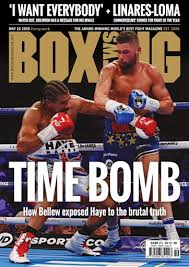
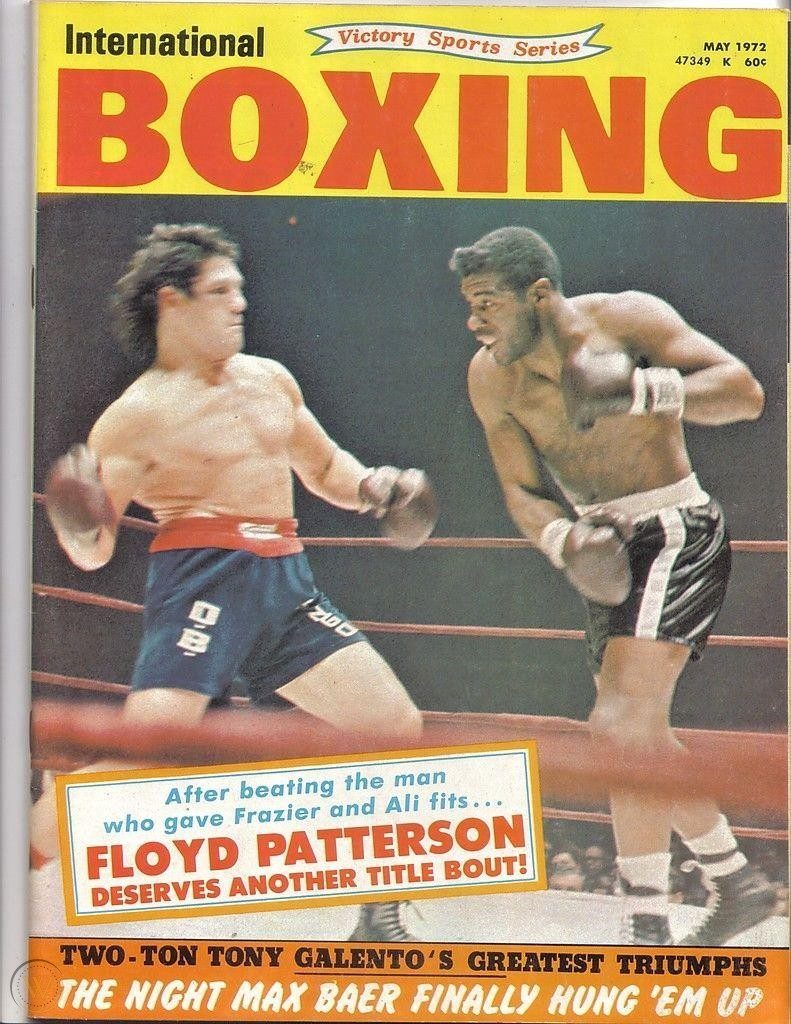




I’m not sure that Floyd Patterson was “exposed” by Sonny Liston, who was the 8 – 5 favourite for their first match, despite Patterson being the champion. Patterson was the most knocked-down heavyweight champion in history (also the one to get up from knockdowns the most times) and Liston was a murderous puncher. Also, Klitschko – Sanders 1 was for the WBO heavyweight championship, not just a fight between two contenders for another version of the title. I have often wondered about the fabled reason for Schmeling’s knockout of Louis (“I see something”, the “something being that he carried his left hand low or did not retract it in a straight line after throwing a jab). Truth is, if one watches the films of the era, it is clear that everyone carried their left hands low, not least of whom Max Schmeling himself. The alleged “flaw” in Louis’s stance has become the stuff of legend, but is not borne out by the fight footage.
Hi Jan.
I don’t believe Patterson was “exposed.” That was my point. Exposed is a word that has been used to describe any number of fighters suffering bad losses. The point is how fans respond to losses, and how those losses can be setbacks, but not necessarily career-enders. As I noted, Patterson enjoyed a great deal of success post-Liston. As I believe Anthony Joshua also can.
The WBO title is not the heavyweight championship. At the time Klitschko and Sanders clashed, they were mere contenders to the real throne. I personally rate alphabet soup titlists as contenders if they aren’t the lineal champ.
As for what Schmeling saw or didn’t see, it’s possible he simply took advantage of a strategic opportunity in the moment, and its also possible he observed this habit from viewing earlier fights. Either way, he still employed intelligent tactics to defeat Louis.
Good points. The “linear championship is a vague concept, though. If it means that the champ is the “man who beat the man”, the linear championship ended when Jeffries retired, again when Tunney and Marciano retired and yet again when Ali retired post Spinks 2. Granted, Johnson did eventually beat Jeffries and Holmes beat the shadow of Ali, but to call those competitive fights would be a stretch. Anyway, it’s great reading your opinions and being able to exchange ideas and theories. Keep the articles coming please; they’re a great read. I am South African, so I trust you’ll understand my pro-Sanders bias. But for discipline and drive, he could have been a great one.